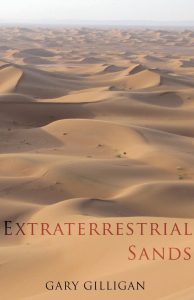Comet Egypt and the Two Lands
There were two Egypt’s, one up one down, heaven and earth. Through child-like eyes and in the absence of 3,000 of science the blackness of space was perceived as a hemispherical dome shaped land canopying our flat earth. The Egyptians quite naturally called these ‘two lands’ Upper and Lower Egypt. Upper Egypt is where the transposed Egyptians, the stars resided. The stars were perceived as real people living a life eternal in the black land (kemet) above. During the night they slept just as we do on earth. On the morn the ‘two lands’ burst into life as the Red Sun rose in the east. The inhabitants of both Upper and Lower Egypt would awake to begin such tasks as ploughing the fields, sowing and reaping. In other words the stars would awake the same time as their earthly counterparts to undertake the same agrarian tasks they once undertook on earth.
The space in between Upper and Lower Egypt I have dubbed the intermediate space, although the Egyptians may have called it the Duat. This location is to be seen as having more in common with Lower Egypt, earth. The Egyptians believed when they were born two of them were created, the physical body and an exact double they called the ka. Our modern day interpretation has erroneously deemed the ka as some kind of spirit form, this is incorrect. In a world dominated by cosmic catastrophe, the kas of the Egyptians were the infinite number of comet shaped bodies inhabiting the intermediate space between heaven and earth. It was believed after death the Egyptians would join with these astral doubles and after a perilous journey (chaos), and providing they’d been ‘good and just’ during their earthly life, it was hoped they would be reborn as a star in the kingdom of Osiris (the god who look after the stars above).
On this page, and by way of the art historical approach, it is my intention to demonstrate how close proximity cometary bodies dominated ancient skies. Moreover, the outline or shape of said bodies was clearly reflected in Egyptian art especially in regards to the afterlife and the gloriously decorated coffins.

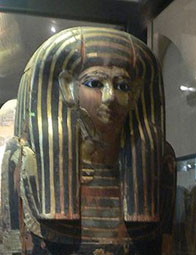
The photo on the left shows comet Holmes in March 2008. This incredible image is unaltered apart from rotating it. The nucleolus of the comet can be seen enveloped by a gigantic spherical coma. Compare this to the Sarcophagus of Mesrē. It takes little imagination to see the Egyptians are undoubtedly emulating the shape of comets, or as they believed, their celestial counterparts, their kas. The face represents the nucleolus while the distinctly odd copious hairdo represents the coma.
Compare the following comet images with the basic outline of other anthropoid Egyptian coffins and figurines.
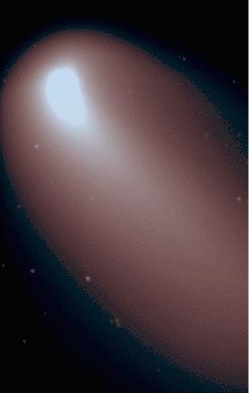
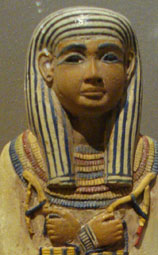

This isn’t rocket science, cosmic catastrophe and a sky awash with cometary bodies pathed the way for such imagery. Most of the comet images on this page have been captured using powerful telescopes; in ancient times there was no need for magnification instruments just a cursory glance skywards revealed ‘personified’ comets of all sizes. This would include cometary planets as demonstrated with Comet Venus – all granted visibility day and night courtesy of a hazed Red Sun.
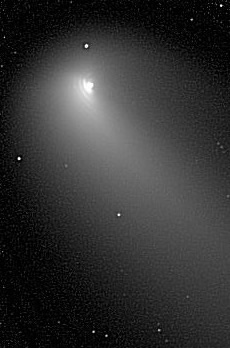
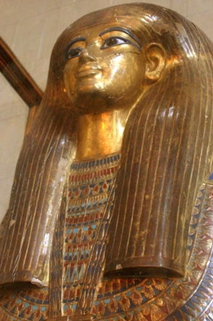
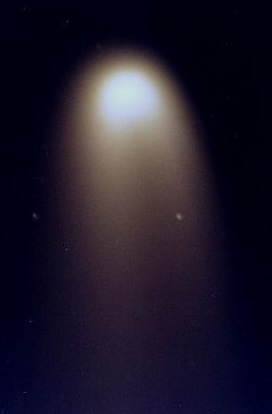
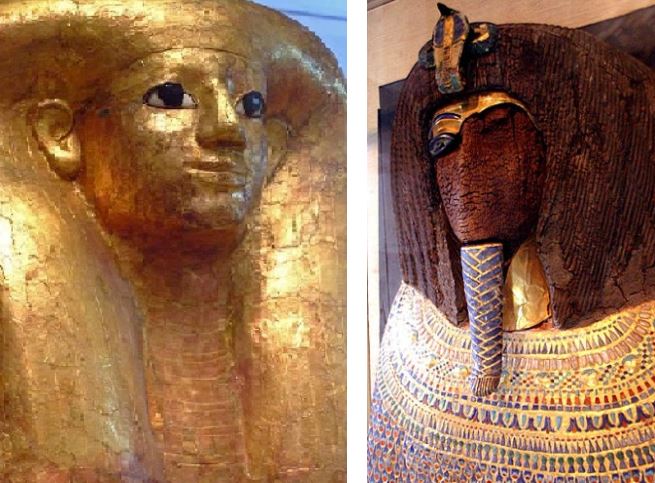
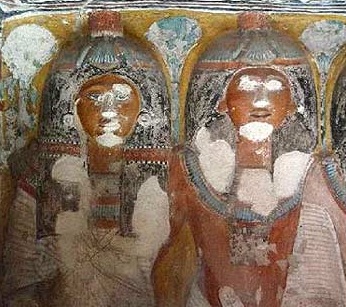
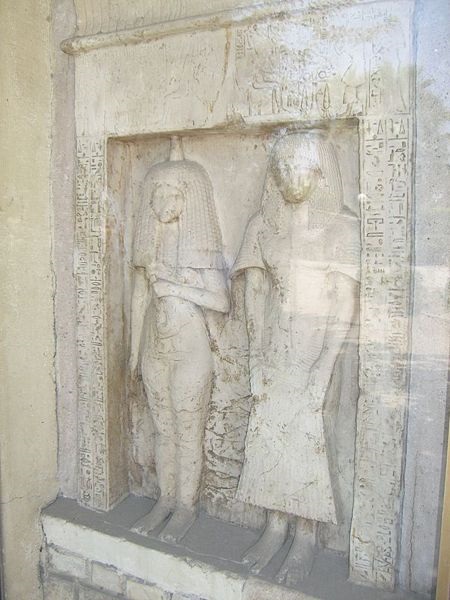
On the left we have two ‘comet’ figures enclosed in a false door. False doors were a means by which the earthly Egyptians would talk to their friends and relatives in the land above – a very real physical world above, or so it was believed.
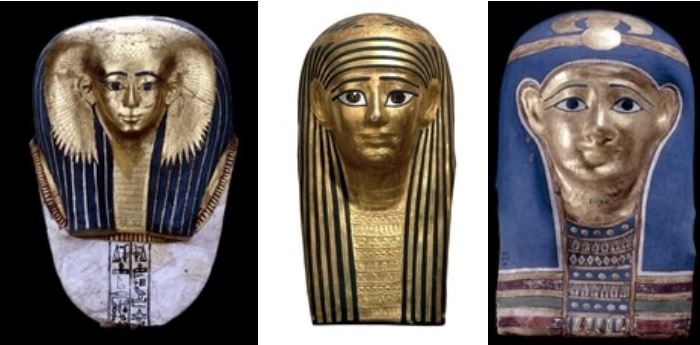
Middle and left: golden comets; close proximity bodies coloured gold due to the light from the Sun. Right: blue cometary hair! Why? Answer, comets many times appeared blue especially during the day.
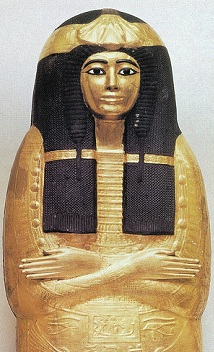
It was believed some of the resurrected Egyptians would spend eternity with the sun god Re, hence the golden coffin. Actually, this golden coffin is from the Late Period, the time when the Sun god Ra began to slowly emerged from a veil of dust to slowly appear golden and not red (see Red Sun).
The comet form wasn’t exclusive to coffins and the afterlife, on the contrary the ‘comet look’ (as you would expect) also featured prominently in life statues as well. As seen below.

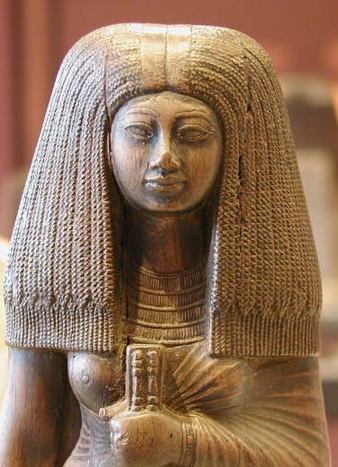

If the above isn’t based on a comet I don’t know what is!
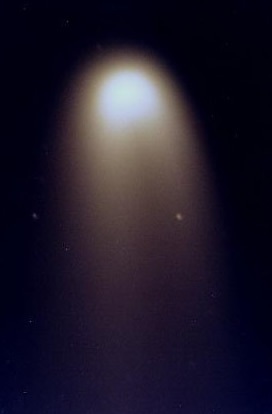

Senenmut/Mars

amidst solar system dust.
On the left we have Senenmut who I believe was a guise of Mars. Out ranked (outsized) at this particular time by Hatshepsut/Venus (“Foremost of the Noble Women” & “Just and Full of Vitality like the Sun.’).

amidst Hathor, Earth’s rings.
Almost lost amidst the dust and debris Senenmut/Mars appears fixed on the horizon taking on the attributes of a comet whist seemingly holding a smaller body (daughter) in front of him. Why else would you bury a child in granite in this way?
While we’re on the subject of dust, the statue on the right is symbolic of Senenmut/Mars appearing within Hathor – Earth’s Ring of Debris (hat-hor = “House of the King”). Hathor depicted here wearing the ‘wraparound’ cometary wig. The Sumerian equivalent being the “Lady of the Mountain” Ninhursag.


